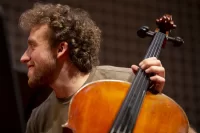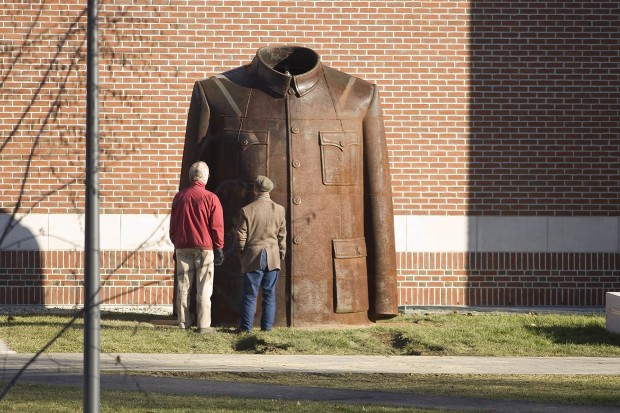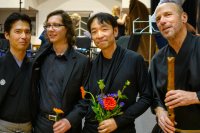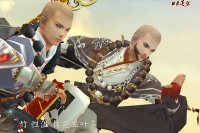
Atskuo Hirai tries on ‘Mao Jacket’
By Atsuko Hirai
Many breathtaking specters have descended upon the Bates campus in recent years, but few can top the apparition of Chairman Mao cloaked in his legendary, larger-than-life jacket.
We are told that this piece of public art was the creation of a sculptor both famous and influential in his home country of the People’s Republic of China.
But what makes an artist famous and influential in that country? And on which side of that fame and influence do he, the artist, and Bates, his host, stand?

Sui Jianguo’s sculpture “Legacy Mantle (Mao Jacket)” sits on Alumni Walk shortly after its December 2008 installation. On loan, the work graced the campus for a year. Phyllis Graber Jensen/Bates College
The question is tantalizing because Chairman Mao was once a political and ideological sworn enemy of the college’s homeland and because his historical significance is still being fought over passionately. The “public” of this art we have on hand is indeed “political.”
Or perhaps I am missing something. Perhaps Chairman Mao has transcended political and ideological divides the world over, now that his country has become downright capitalist. Perhaps it’s just the folly of morons stuck in the political, ideological, and precapitalist past to argue fine points. If we forget about Tibet and the Dalai Lama, the College may even receive a gift of an endowed Chairman Mao chair in a well-placed department.
After all, Chairman Mao was not such a thoroughgoing revolutionary in his lifetime. In the biography Mao: The Unknown Story, we learn that in Yan’an, the famous Chinese Communist hideout, the local cotton was rough and uncomfortable, “so softer cotton was imported for senior cadres. Mao, outwardly, dressed the same as the rest, but his underwear was made of fine material…. The maid did not qualify for any underwear or socks at all, and kept getting colds as a result.”
Does our own Mao jacket include his underwear made of fine material? It’s been frightfully cold lately.
The reaction on campus that I like most came from our own students. Two women stood in front of the jacket and pondered its identity. After some deliberation, they decided it looked like a Chanel suit.
Bravo! Though I have never heard of cotton Chanel suits, perhaps the rusty metal jacket nestled against Pettengill Hall really does represent Communist Mao’s warm, fine outfit, suitable even for his capitalist offspring. Therein must lay the political correctness of this particular objet d’art.
Atsuko Hirai, the Kazushige Hirasawa Professor of History, joined the Bates faculty in 1988.




